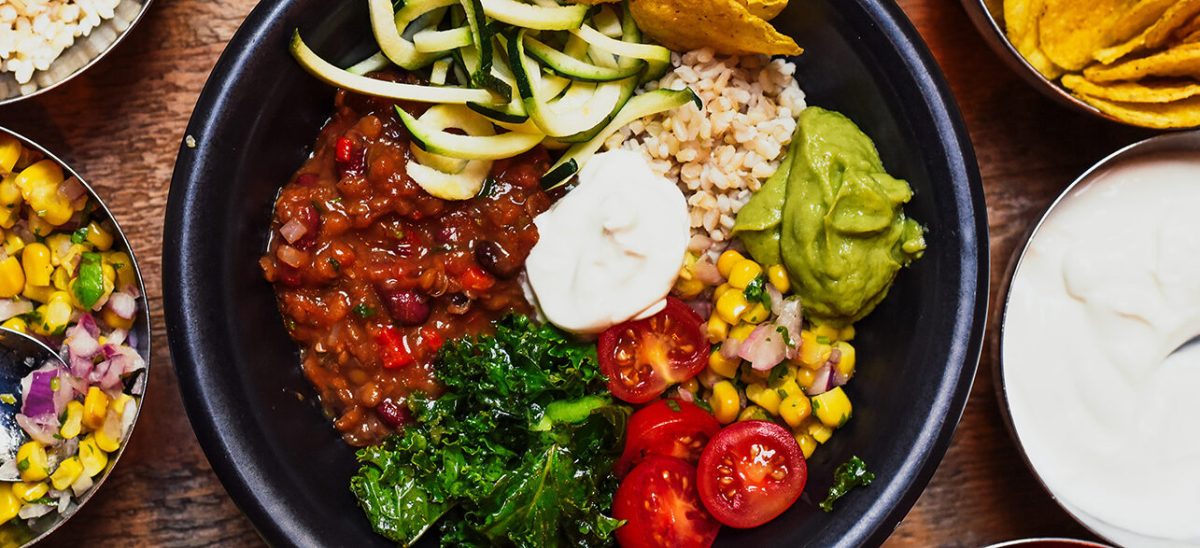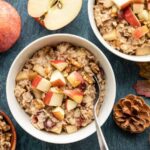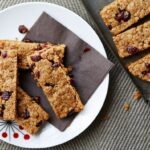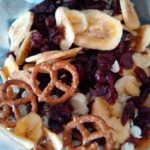Discover a vibrant world of flavor and nutrition with nut-free power bowls! These dynamic creations offer a delicious and healthy alternative for those with nut allergies or preferences, proving that vibrant, satisfying meals can be enjoyed by everyone. We’ll explore a range of recipes catering to various dietary needs, from vegan and vegetarian options to high-protein powerhouses, all while focusing on fresh, high-quality ingredients and stunning presentation.
This guide dives deep into the art of crafting nut-free power bowls, providing detailed step-by-step instructions, creative ingredient combinations, and visually appealing plating ideas. Learn how to maximize nutritional benefits, accommodate various dietary restrictions, and create meals that are as pleasing to the eye as they are to the palate. Prepare to unlock a world of culinary possibilities and transform your mealtimes into a celebration of healthy eating.
Nut-Free Power Bowl Recipe Variations

These vibrant and nutritious power bowls offer a delicious and customizable way to enjoy a healthy meal, completely free of nuts. Each recipe caters to different dietary preferences, providing a diverse range of flavors and textures while maximizing nutritional benefits. These recipes are easily adaptable, allowing you to swap ingredients based on your personal taste and dietary needs.
Three Nut-Free Power Bowl Recipes
| Recipe Name | Ingredients | Instructions | Nutritional Information (per serving – approximate) |
|---|---|---|---|
| Vegan Rainbow Power Bowl | Quinoa, roasted sweet potatoes, chickpeas, red cabbage, shredded carrots, cucumber, bell peppers (red and yellow), avocado, tahini dressing. | Cook quinoa according to package directions. Roast sweet potatoes until tender. Combine all ingredients in a bowl and drizzle with tahini dressing. | Calories: 450, Protein: 15g, Fiber: 12g |
| Vegetarian Mediterranean Power Bowl | Brown rice, roasted broccoli, Kalamata olives, crumbled feta cheese, cherry tomatoes, red onion, lemon-herb vinaigrette. | Cook brown rice according to package directions. Roast broccoli until tender-crisp. Combine all ingredients in a bowl and toss with lemon-herb vinaigrette. | Calories: 400, Protein: 12g, Fiber: 8g |
| High-Protein Lentil Power Bowl | Brown rice, red lentils, spinach, chopped hard-boiled eggs, shredded carrots, sunflower seeds, lemon-tahini dressing. | Cook brown rice and red lentils according to package directions. Combine all ingredients in a bowl and toss with lemon-tahini dressing. | Calories: 500, Protein: 25g, Fiber: 10g |
Nutritional Benefits Infographic
The infographic would be designed with a clean, modern aesthetic. A vibrant background gradient of greens and oranges would evoke feelings of health and freshness. Each power bowl would be represented by a circular icon featuring its key ingredients, rendered in a realistic style. The fonts used would be clear and sans-serif, such as Open Sans or Roboto.
The Vegan Rainbow Bowl icon would be dominated by bright colors representing the diverse vegetables, with a small quinoa grain subtly included. The Vegetarian Mediterranean Bowl icon would feature olives, tomatoes, and broccoli in rich, earthy tones. The High-Protein Lentil Bowl icon would showcase lentils, eggs, and spinach in a slightly darker palette, reflecting the higher protein content.
Each bowl’s icon would be linked to a section detailing its nutritional benefits. These sections would utilize a combination of text and simple bar graphs to illustrate protein, fiber, and calorie content. The bars would be colored to match the bowl’s icon, enhancing visual appeal and readability. Key nutritional benefits, such as improved digestion (fiber), sustained energy (complex carbs), and muscle building (protein), would be highlighted with concise, informative text.
Alternative Ingredient Substitutions
Each recipe offers flexibility for customization. For the Vegan Rainbow Bowl, sweet potato could be replaced with butternut squash, chickpeas with black beans, and tahini dressing with a lemon-herb vinaigrette. For the Vegetarian Mediterranean Bowl, brown rice could be substituted with quinoa, feta cheese with goat cheese, and the lemon-herb vinaigrette with a balsamic vinaigrette. Finally, for the High-Protein Lentil Bowl, brown rice could be replaced with farro, sunflower seeds with pumpkin seeds, and the lemon-tahini dressing with a creamy avocado dressing. These substitutions maintain the nutritional integrity of the bowls while catering to diverse preferences.
Nut-Free Power Bowl Recipe for Specific Dietary Needs
Creating delicious and nutritious power bowls that cater to various dietary restrictions requires careful ingredient selection and recipe adaptation. This section details recipes for gluten-free and low-carbohydrate diets, highlighting the challenges and considerations involved in each.
Gluten-Free Power Bowl Recipe
This vibrant power bowl is packed with flavor and nutrients, completely free of gluten. The base features hearty quinoa, a naturally gluten-free grain, providing a substantial foundation. Colorful vegetables add texture and essential vitamins, while the protein source offers satiety and muscle-building benefits.
Ingredients:
- 1 cup cooked quinoa
- 1 cup roasted sweet potatoes, cubed (Toss with olive oil, salt, and pepper before roasting at 400°F (200°C) for 20-25 minutes)
- 1 cup roasted broccoli florets (Use the same roasting method as the sweet potatoes)
- 1/2 cup black beans, rinsed and drained
- 1/2 cup cooked chickpeas
- 1 avocado, diced
- 1/4 cup chopped red onion
- 2 tablespoons chopped cilantro
- Dressing: 2 tablespoons lime juice, 1 tablespoon olive oil, 1 teaspoon chili powder, salt and pepper to taste
Preparation:
- Combine the cooked quinoa, roasted sweet potatoes, roasted broccoli, black beans, chickpeas, avocado, red onion, and cilantro in a large bowl.
- In a small bowl, whisk together the lime juice, olive oil, chili powder, salt, and pepper to create the dressing.
- Pour the dressing over the bowl and gently toss to combine.
- Serve immediately or chill for later.
Gluten-free diets exclude wheat, barley, and rye. Cross-contamination is a significant concern; ensure all utensils and preparation surfaces are thoroughly cleaned. Always check food labels carefully for hidden gluten sources.
Low-Carbohydrate Power Bowl Recipe
This variation emphasizes protein and healthy fats, minimizing carbohydrates for those following a low-carb diet. Cauliflower rice replaces quinoa as the base, significantly reducing carbohydrate content.
Modifications and Nutritional Impact:
Replacing quinoa with cauliflower rice dramatically lowers the carbohydrate count. The increase in healthy fats from avocado and the addition of extra protein from grilled chicken breast or salmon enhances satiety and supports a low-carb lifestyle. The nutritional profile shifts from a higher carbohydrate, moderate protein, and moderate fat content to a lower carbohydrate, higher protein, and higher fat profile. This adaptation supports metabolic processes associated with low-carbohydrate diets.
Ingredients: (Adapt the gluten-free recipe above with the following changes)
- Replace 1 cup cooked quinoa with 2 cups riced cauliflower (fresh or frozen)
- Add 4 oz grilled chicken breast or salmon, diced
- Increase avocado to 1 1/2 avocados, diced
- Optional: Add a handful of spinach or other low-carb leafy greens.
Challenges and Considerations for Diverse Dietary Restrictions
Creating nut-free power bowls for individuals with various dietary restrictions presents unique challenges. Avoiding cross-contamination is crucial, especially for those with allergies. Finding suitable substitutes for common ingredients, such as nuts and gluten, while maintaining nutritional value and flavor requires creativity and careful planning. Understanding specific dietary needs and limitations is paramount to crafting power bowls that are both safe and enjoyable. Thorough label reading and awareness of potential allergens are essential for safe preparation. For example, individuals with soy allergies need to avoid soy-based sauces or ingredients, while those with dairy allergies must omit cheese or dairy-based dressings.
From the simple elegance of a basic nut-free power bowl to the vibrant artistry of complex, layered creations, the possibilities are endless. This exploration of nut-free power bowls has revealed not only the deliciousness but also the versatility and adaptability of this healthy meal format. By embracing fresh ingredients, creative combinations, and thoughtful presentation, you can craft power bowls that are both nutritious and visually stunning, satisfying your taste buds and nourishing your body simultaneously. So, embark on this culinary adventure and discover the joy of creating and enjoying these vibrant, healthy meals.
Expert Answers
Can I meal prep nut-free power bowls?
Absolutely! Prepare ingredients in advance and store them separately. Assemble bowls just before serving for optimal freshness and texture.
What are some good sources of protein for nut-free power bowls?
Excellent protein sources include lentils, chickpeas, quinoa, tofu, tempeh, edamame, and grilled chicken or fish.
How long can I store leftover nut-free power bowls?
Leftovers should be stored in an airtight container in the refrigerator for up to 3-4 days.
Are nut-free power bowls suitable for children?
Yes, nut-free power bowls are a great option for children, offering a fun and healthy way to incorporate a variety of fruits, vegetables, and proteins into their diet. Adjust portion sizes and ingredients to suit their preferences and dietary needs.


